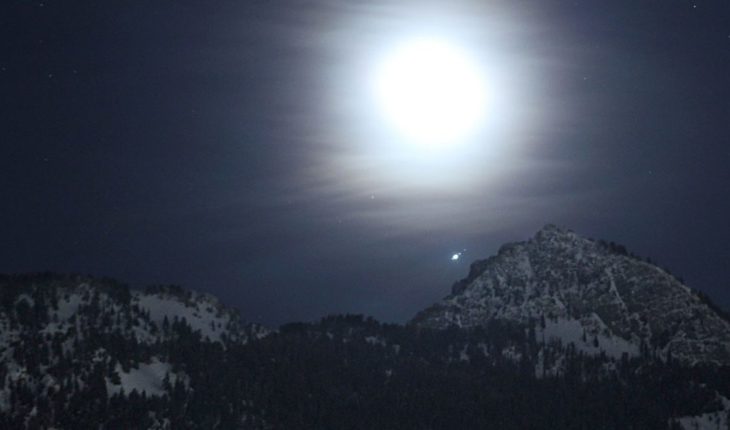This Friday you can enjoy seeing Jupiter very close to Earth.
The Yucatecan and academic astronomer of the Instituto Tecnologico de Mérida, Eddie Salazar Gamboa, said that this Friday will give a phenomenon called perigee or maximum approach from that planet to Earth, which will be 4.284252 astronomical units (UA), ie 640.9 Million Miles.
READ: The incredible images in the foreground of the red spot of Jupiter sent by the Juno probe
A UA is the average distance from the sun to the Earth, which is approximately 150 million kilometers.
That same day, when the sun emerges from the horizon this planet will be hidden, phenomenon that occurs every 399 days, ie, a year with 34 days.
What’s Up for June? ? Jupiter is up all night, while Mercury and Mars decides to get close, and the Moon reveals its tilted orbit. Downloadable video and transcript available at https://t.co/tPYUwcimlm pic.twitter.com/lPw2pIEyZ0
— NASA Solar System (@NASASolarSystem) June 3, 2019
At the same time, Jupiter will have its greatest brilliance, so it will be the fourth most visible Astro in the Celestial vault as mentioned.
He clarified that the more negative the brightness of an astro, the greater the stellar brilliance.
“Just at the time of the opposition, the planet Jupiter will be 100 percent illuminated by the sun, allowing it to have a greater stellar magnitude,” he said.
He commented that it will be easy to see it, by its brilliance, besides that it will be in the constellation of Ofiuco, even, that day the planet “leaves” at 19:30 hours and will be hidden at 6:24 hours of June 8.
Reads: 3 things that 50 years ago the film 2001: Space Odyssey predicted accurately and one where he was wrong
The scholar added that with a small telescope will be observed four of the 63 natural satellites that has this giant planet, specifically, Io, Calixto, Europe and Gamínedes.
The previous phenomenon similar to this occurred on May 9, 2018 and the next will be on July 14, 2020.
Finally, he added that the planet has an orbital period of 11.86 years, the movement of translation to the sun, as well as its period of rotation, ie, its “Day” has a duration of 6:56 hours.
Thank you for reading! Help us get on with our work. How? Now you can subscribe to the political Animal on Facebook. With your monthly donation you will receive special content. Find out how to subscribe here. Check out our list of frequently asked questions here.





